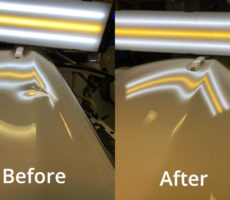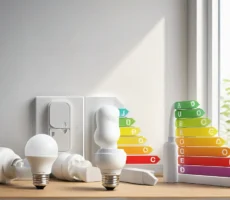You probably heard that parking on grass or dirt can cause rust, but what about parking on gravel? Will your car rust and is it bad for tires?
Is Parking on Gravel Bad for Your Car? Depending on how long you store it, the moisture from the ground can cause some corrosion for longer periods. Salt and inert chemicals that can get stuck under your car may react with water or temperature and cause further damage.
Short-term parking shouldn’t cause more damage than your regular use of the car, but it’s always best to avoid parking on gravel in the long term.
You should try and get your car on concrete or pavement if at all possible. To avoid rust, your car should be inside and de-humidified. There are some other things you can do to protect your car when parking on gravel.
Disclaimer: Some of the links in this article are affiliate links that may provide me with a small commission at no cost to you. I only recommend only the best products and services. Read about affiliate disclosure in my privacy policy.
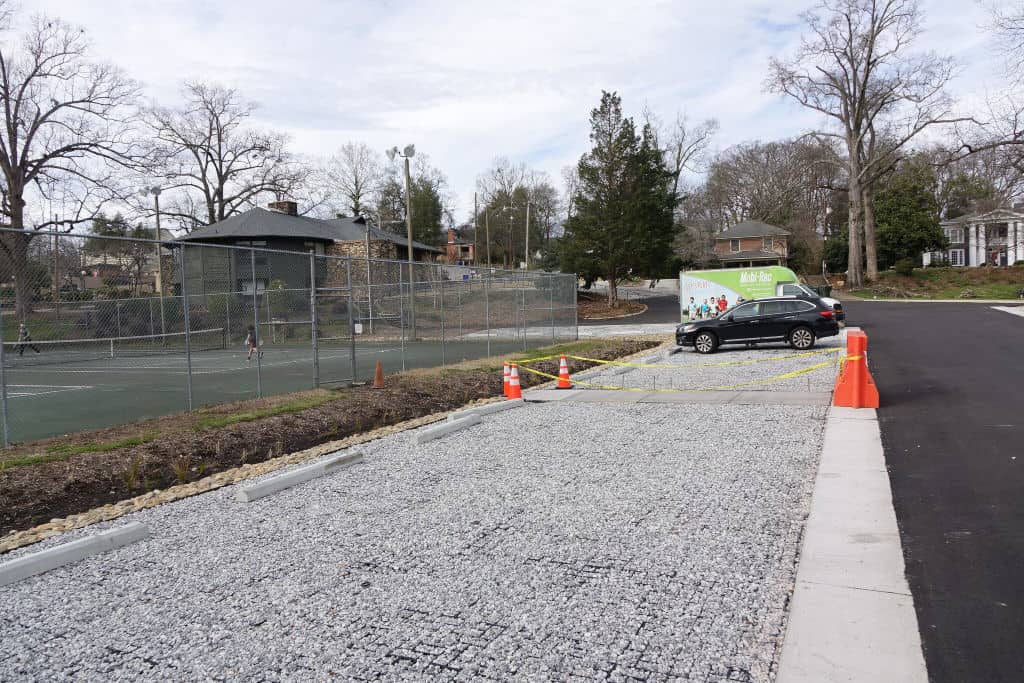
Is It Okay to Park Your Car on Gravel?
If the car is parked for extended periods then the rust may cause damage over time, depending on the car model. Moisture evaporates and goes straight up to the floorboards of the car, which creates rust and damages your car.
Anything that can retain moisture can cause corrosion issues over the long run.
The best thing you can do is to park your car on concrete or pavement because the water won’t get collected under your car creating moisture. Water on pavement flows away from your car or gets dried out by the sun much quicker than on gravel.
It’s still better to store your car on gravel than on grass or dirt, and the same goes for storing an RV on gravel.
Any surface that creates dust and dirt will make it stick to your car. Dirt and rust can hold onto moisture and promote rust. And if that gravel has any chemicals in it or high contents of iron, they will all stick to under your car and cause rust.
Ensure you periodically inspect the area where you park. Over time, depressions can form in the gravel, leading to water pooling, which worsens the moisture issue.
When it comes to driving on gravel roads, any sharp turns or fast driving throws the stones at an angle up from the tires and hits the underbody or frame of your car. These stones chip away the paint which exposes the metal of your car for the rust to start.
You can protect your car from this by adding tape, vinyl, or different kinds of chip tape protection. Many vehicles already have this, especially if they’re created for off-road driving.
An often overlooked factor when parking on gravel is the effect of seasonal changes. During colder months, the freeze-thaw cycle can cause the gravel to shift and become uneven, potentially affecting tire alignment over time. Misaligned tires can lead to uneven tire wear, reduced fuel efficiency, and even decreased handling performance.
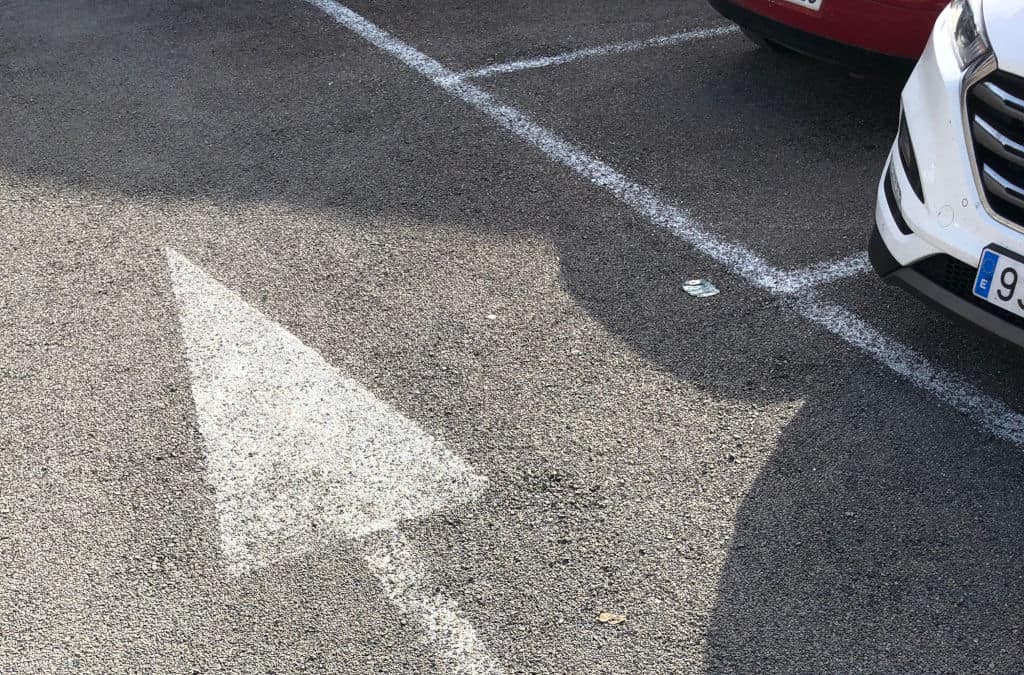
Is Parking on Gravel Bad for Tires?
If the gravel is of traditional, construction-grade stones, then parking on gravel should not damage your tires. If they are unrefined stones collected by hand, then these stones could have sharp edges or a lot of minerals and iron in them.
The chances of this kind of “sharp” gravel damaging your tires are extremely low, especially if you drive slow. Any sharp twists and turns and high-speed driving is causing trouble.
But this will also depend on the type of rock.
Traditional, construction-grade stones are good for parking spaces and generally tumbled for grading purposes. This is relatively grounded gravel, which is unlikely to cause a puncture at low speeds. Therefore, gravel probably won’t damage your tires, if you pay attention to your driving.
Remember that prolonged parking on sharp gravel can add stress to sidewalls. Consider occasionally rotating the position of your car to distribute this stress.
Related: How Long It Takes for Asphalt to Dry
How to Make a Gravel Parking Pad?
If you’ve got some space on the dirt or grass which you can use for a parking spot, it may be a good idea to create a gravel parking pad. Here’s how to do it.
If using gravel only, you first need to put the larger crushed rock down as a base to reduce mud and runoff. Additionally, it will save you money on the finished gravel because that is usually more expensive per cubic foot.
The best way is to use a geotextile layer, a road cloth which you place down under first, and top with gravel. Road cloth is a geotextile material similar to landscape fabric, but heavier, more robust, designed for driveways and roadways.
The benefits of geotextile are less stuff growing up through the gravel, and also gravel not getting pounded into the soil. With this approach, you may also need less gravel overall.
Placing geotextile under the gravel impedes the rate of seepage into the ground below. It provides stability and a barrier layer to impede the travel of mud up into your gravel section. Its purpose is stabilization and separation.
Here’s a video on installing geotextile fabric and rock:
For a topcoat on your parking pad, you can try to get asphalt grindings or chippings, which are usually from old parking lots or streets that have been repaved. It packs down better and will give you a more paved feel.
Recycled or pulverized asphalt is great for stability. 3-4” over fabric is enough for a driveway. You can do it without fabric as well, just make sure to create a thicker layer, such as 6 to 8”.
You can also use some kind of grid material to stabilize your gravel parking pad, such as Geocell or TRUEGRID.
A gravel grid is a base system used under gravel surfaces, but they can be in top-level filled with gravel, as well. They are manufactured from a range of durable materials with the purpose of stabilizing gravel surfaces and preventing shifting.
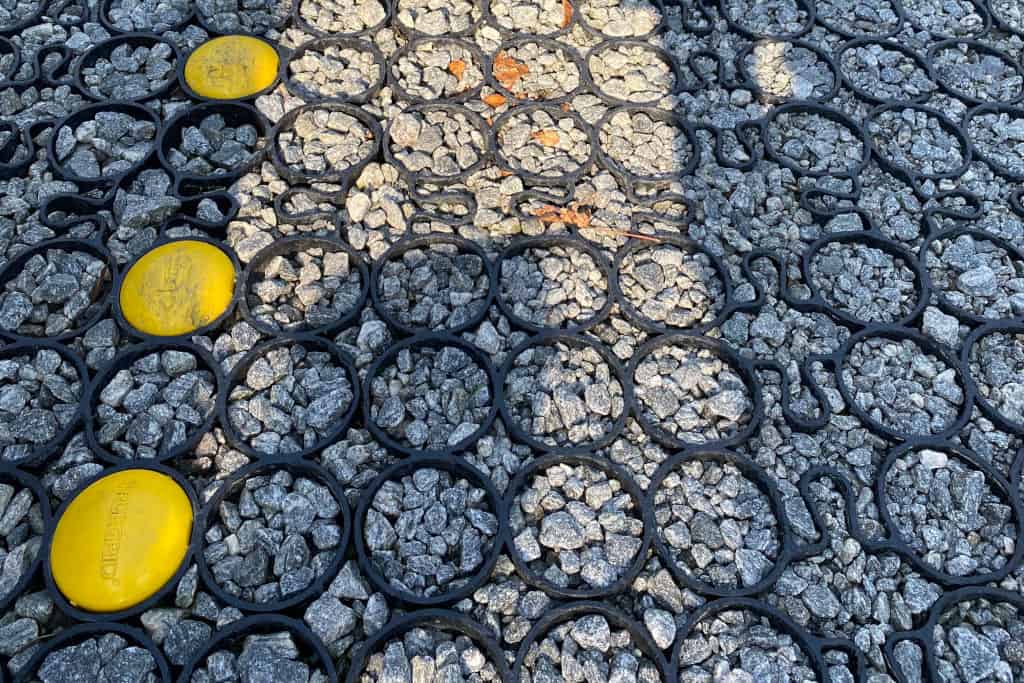
It’s a useful material to use for a driveway, especially if your driveway is on a slope. This permeable paving grid is usually made from a recycled HDPE, and it interlocks with each other to form a stable surface. It then gets filled with gravel and looks like on the image above.
In regions with heavy rainfall, consider installing a French drain system around your gravel parking area. This can help channel water away, reducing the chance of standing water which can harm your vehicle’s undercarriage.
Does Parking on Gravel Cause Rust?
Whether you park your car on grass, dirt, or gravel you are adding risk for rust to appear. Gravel may be a better option out of these because it will allow moisture to evaporate faster.
Still, it’s not a great idea to park your car on gravel, because gravel is not much better than other surfaces on the outside. The result will be the same outside on all of these surfaces because there will always be some corrosion if you park your car outside.
Environmental factors play a significant role in rust formation. If you live in coastal areas, the salty air combined with moisture from the gravel can amplify the risk of corrosion. It’s not just the gravel, but the entire environment that matters.
Is there a type of gravel causing minimum of rust?
To minimize the rust, you can choose the right type of gravel for your area.
Gravel only refers to the size of the material, but the actual rock varies from area to area. Rock yards use local materials, either dug from the ground or seined from local rivers, which can release iron when driving over them. Dust gets in places where it’s hard to get out. Exposed iron plus water will create rust that can damage your car.
But it’s not so much about the gravel type itself but more about where the gravel is sourced and the rock type that’s prevalent in that region. Sedimentary rocks (like limestone) tend to contain less iron than igneous or metamorphic rocks (like basalt or gneiss). We suggest the following:
When selecting gravel for your driveway or parking area, consider opting for gravel sourced from sedimentary rock regions, like limestone, as these tend to release less iron. While no gravel type is entirely iron-free, reducing the iron content can decrease the potential for rust formation.
However, the best place to park your car is inside, in a de-humidified area. Otherwise, it will slowly corrode more and more and will cause damage.
How to Prevent Corrosion Under Your Car?
When parked outside, your car will always be subject to corrosion. If you’re concerned about the moisture released from the soil or gravel, you could put down some type of vapor barrier, such as a heavy mil Plastic/tarpaulin, and park over that.
This will prevent moisture from getting to your car and will be trapped beneath, or evaporate far away from your car.
Another thing you may want to consider is to have your vehicle undercoated with an aerosol protectant, such as or LPS 3 Premier Rust Inhibitor. This undercoating may help reduce corrosion to the body of the car.
Are Gravel Driveways Bad for Cars?
Gravel driveway, and any dirt road for that matter, are great when built right and maintained. Pavements may be a better option, but if you properly lay the gravel driveways, have them properly drained and leveled, it can be a great option for your car.
Paved driveways are usually a better option, but the cost can be high, which is why many people tend to go for a gravel driveway. If you go for an asphalt driveway, make sure you know the best time to pave your driveway.
To create your gravel driveway, the first thing is to get some proper gravel to raise the height of the driveway a certain amount. The surface needs to be sloped properly to drain water off to both sides.
A good dirt road has a crown or hump down the middle lengthwise to drain water off to each side, but it also depends on where you need water to go. If it’s on the hill, you need a good ditch to get this water down the hills, without eroding the driveway.
In the long-term, gravel driveways are not the best environment for cars, but they are also affordable and easy to maintain. They can be easy to install, as well.
What Is the Best Gravel for Parking On?
The most common gravel for driveways for parking is called class 5 gravel, which is crushed limestone up to 1” in size. Pea gravel may be a good option as well.
It’s usually stone mixed with dust in it, not washed. The dust helps lock the gravel for a good base.
Some people also prefer the pea gravel, which has nice looks but can present problems as it will migrate easily and spread under the weight of vehicles. For this reason, pea gravel needs to be stabilized for the long term.
Here’s a good video on tips on how to create a gravel driveway for long-term:
Another example of using Geocell grid material:


